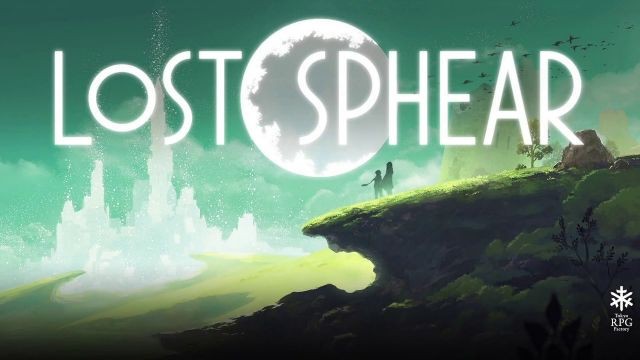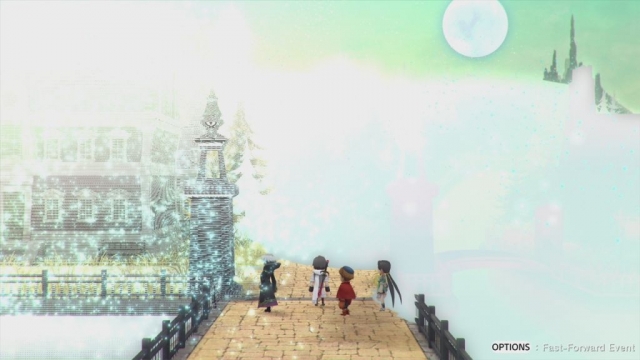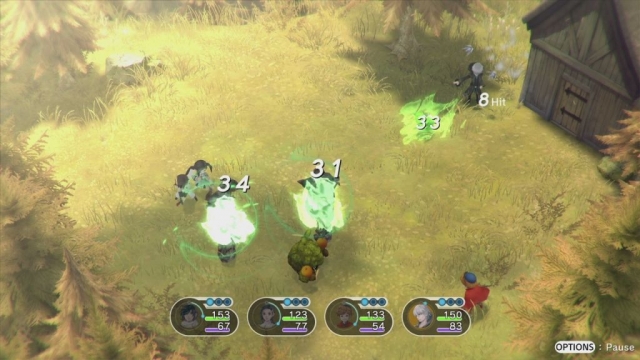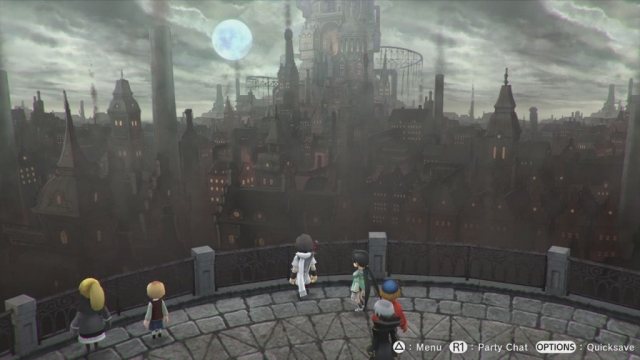Lost Sphear

I Am Setsuna marked the debut of Square Enix’s Tokyo RPG Factory and was my personal favorite RPG of the past decade on consoles. It was heavily influenced by Chrono Trigger, but told an emotional story about someone willing to sacrifice themselves for what they believed to be a greater good. It was a tale about loss and acceptance and had me hooked from the moment it began. Lost Sphear begins in a more traditional manner and yet still manages to mix things up a bit too. You start off with a giant mech suit battle and then wonder just what’s going on with that before going to the main character Kanata’s house where he has of course just been woken up. He’s out to explore the world with his friends and all manner of scary things are going on involving monsters running rampant around the town.
Lost Sphear goes for a more traditional approach to the story of a JRPG and that isn’t an altogether bad thing. The story itself has some strange bends in it – like the entire town turning white and leading Kanata, Locke, and Lumina down the path to unraveling the mystery. Other towns and areas have had this issue and it turns out they’re becoming lost – but only Kanata seems to be able to bring things back to how they were. In his dreams, he discovers that he has the power to seemingly bring back things that are considered “lost” in the world by becoming enveloped in white mist. He is able to eventually save the town by going to a shrine filled with its memories – but is still left wondering just what his powers are and what they mean.
Things are complicated further when an attempt to bring something back goes awry and it is instead gone forever – adding a wrinkle to his power. They are now no longer a magical fix-it tool for the universe – but instead something that must be used only when absolutely necessary and not wasted on small things. He and his friends have their small town life changed forever when the imperial army comes in need of their services because even the capital city area is being overrun by white mist and people are terrified. The big city brings with it an increase in scope and also a change in the kind of concerns you have to have as a player.
Before, monsters roamed the world – but they could be dealt with. Now, you have to worry about your fellow man doing you wrong and dealing with people who are out to get you or simply lie to you for their own entertainment. The scale of the adventure rises and the game finally goes from being a small-time adventure into a large-scale one with big stakes. All of a sudden, it isn’t about saving a single town – but instead, possibly having to save the world from being destroyed by this ever-increasing white mist. It’s a fairly interesting storyline and one that builds up characters fairly well even if character introductions is a bit iffy.
It’s an enjoyable tale even if it doesn’t go for a completely melodramatic set of stakes. Kanata is a bit too much of a blank slate at times – although he is helped by being “the chosen one” in the story. Lumina is essentially the healer of the group and a solid part of it, while Locke stands out a ton and is a bit of a jokester and overachiever. He’s undersized and also his own worst enemy thanks to a bit of a lazy streak in him. The other allies put up with him and care about him, while others in the world aren’t quite as patient with his antics.
Locke is one of the most valuable members of the initial party as well, and attacks with long-range moves that deal out a surprisingly high amount of damage. Lost Sphear’s battle system is one of the better modern-day ones in a JRPG because it relies heavily on your characters’ placement on the battlefield to succeed. Each enemy can be seen on the field, allowing you to avoid most battles, and get a jump on enemies if you attack from behind. Side attacks still give you an edge, and the core combat involves you moving your characters around to better use their skills. With longer-range attackers like Locke, you can attack multiple enemies at one time – and can even fell an entire army in one long-range shot thanks to every enemy taking damage in a turn.
There’s a surprisingly high amount of strategy added to what would otherwise be a normal turn-based JRPG battle system thanks to this mechanic. Being able to do damage to several enemies at once simply due to effective movement feels rewarding and makes this feel like one of the few JRPGs that really benefits from an analog stick for movement since it allows you to get precise character placements quickly. Attack timing is also a major part of the action thanks to the momentum system – this relies on you landing successful attacks to build up a sphere gauge that allows you to land increased damage when you time attacks properly and press square. It adds another layer to a somewhat deep yet simple system that keeps battle pacing fairly brisk.
Visually, Lost Sphear appears to use the same style as I Am Setsuna – but still looks better than it overall. There’s more detail in the world, the characters, and the environments are quite a bit larger and more complex. It’s a more visually impressive game and features a sense of scale that has been lacking in the genre for a long time. With that said, it isn’t a jaw-dropping game but does remain beautiful to look at from beginning to end. Larger-scale enemies terrify you at all times, while smaller enemies feel like the pushovers they are. Animations could be more elaborate, but keeping them simple is also fine given that JRPGs in their heyday were never known for having incredibly smooth animation. The world itself feels far more real than most JRPGs though, thanks to little touches like cloud formations moving with time over an outdoor area – as they would in real life.
JRPGs were known for having incredible soundtracks though, and Lost Sphear keeps that tradition alive. Nothing in the OST quite tops the sheer beauty that was featured in I Am Setsuna’s piano-rich soundtrack. However, it isn’t far behind and uses a lot of piano and stringed music to tell the story of the world and the plight facing it. The Japanese-only voice acting with English subtitles won’t be for everyone, but it works fine since most of the acting is just kept to short sound bytes for attacks and the vast majority of the plot is told with text. Strangely, you can skip the text if you so desire – resulting in the story making no sense if you do it, but I guess it’s good to give people more options than fewer options.
Lost Sphear is an outstanding game, taking most of what made I Am Setsuna memorable and topping it. Lost Sphear doesn’t fare quite as well when it comes to the soundtrack, but its battle system is vastly superior and one of the most enjoyable battle systems I’ve played in a JRPG in years. It keeps the turn-based system that many have used before and puts new twists on it to keep it fresh – so while the plot itself goes with a lot of tried and true turns, the battles feel much newer. It isn’t a perfect game, but does a better job of merging the genre’s past tropes with modern-day gaming conventions than Tokyo RPG Factory’s debut effort and is a must for any fan of JRPGs.
Reviewed By: Jeremy Peeples
Publisher: Square Enix
Rating: 93%
——————————————————————————–
This review is based on a digital copy of Lost Sphear for the PlayStation 4 provided by Square Enix.
 Game Over Online
Game Over Online












You scored this game 93% and said “This game ain’t perfect”? So why did you give it 93%?? ….ah the reviewers these days …..the reviewer sounds as if he had never played any classic Square JRPG before he reviewed Lost Sphear, otherwise he would have “noticed” that Lost Sphear just tries too hard to be another classic JRPG, just like I Am Setsuna which the reviewer called “memorable and topping” and which the game really is not by any means of the imagination because both games lack of its own personality a uniqueness
Giving this game 93% means that Lost Sphear is on par with Chrono Trigger or the old FF games…nonsense
Score inflation. Its an epidemic.